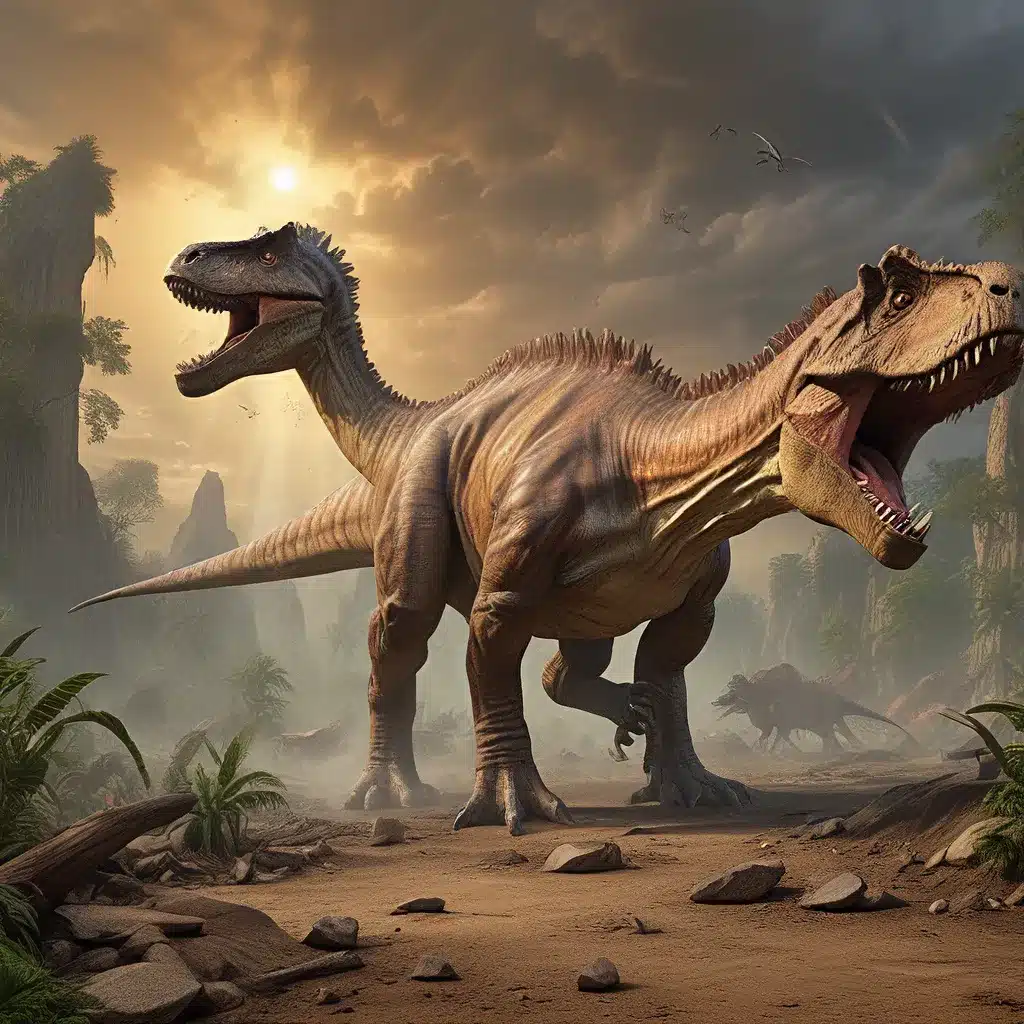
The Mysterious Demise of the Dinosaurs
The extinction of the dinosaurs remains one of the most captivating and puzzling events in Earth’s history. For millions of years, these majestic creatures dominated the planet, thriving in a wide range of ecosystems. Yet, around 66 million years ago, the non-avian dinosaurs suddenly disappeared, marking the end of the Cretaceous period and ushering in the rise of mammals.
Paleontologists and geologists have long sought to unravel the mysteries surrounding this Cretaceous-Paleogene extinction, often referred to as the K-T extinction. While the impact of a massive asteroid has been widely accepted as the primary trigger, recent research has uncovered a more complex and intriguing story. The causes of this cataclysmic event appear to involve a intricate interplay of geological, atmospheric, and ecological factors, each contributing to the ultimate demise of the dinosaurs.
Volcanic Eruptions and Climate Change
One of the lesser-known, yet potentially significant, factors in the Cretaceous-Paleogene extinction is the role of volcanic activity. While the asteroid impact is often considered the main culprit, paleontologists have noted that volcanic eruptions may have wreaked even more havoc on Earth’s biota.
According to the University of California, Berkeley’s Understanding Evolution website, volcanic activity is implicated in at least four mass extinctions, while an asteroid is a suspect in just one. The Siberian Traps, a massive volcanic complex that erupted over a million years, is believed to have been a primary driver of the Permian-Triassic extinction, the deadliest mass extinction in Earth’s history.
Similarly, the Central Atlantic Magmatic Province, a vast igneous province spanning present-day South America, Africa, and North America, has been linked to the end-Triassic mass extinction around 201 million years ago. These enormous volcanic eruptions not only released vast quantities of greenhouse gases into the atmosphere, but they also likely triggered a cascade of environmental changes that severely disrupted the delicate balance of Earth’s ecosystems.
The Asteroid Impact Hypothesis
While volcanic activity may have played a significant role, the asteroid impact hypothesis remains the most widely accepted explanation for the Cretaceous-Paleogene extinction. This theory was bolstered by the discovery of the Chicxulub crater off the coast of Mexico’s Yucatán Peninsula, which provided compelling evidence of a massive asteroid impact around 66 million years ago.
According to National Geographic, the asteroid, estimated to be roughly 75 miles (120 kilometers) in diameter, slammed into the Earth at a staggering speed of 45,000 miles per hour (72,000 kilometers per hour). The impact flung vast quantities of dust, debris, and sulfur into the atmosphere, triggering a series of catastrophic events that led to the extinction of the non-avian dinosaurs and many other species.
The impact and its aftermath likely caused severe global cooling, as the atmospheric debris blocked sunlight and disrupted the planet’s climate. This dramatic shift in environmental conditions would have been devastating for the dinosaurs, which were adapted to thrive in the warm, lush environments of the Cretaceous period.
The Gradual Decline and Sudden Collapse
While the asteroid impact is often portrayed as a sudden, cataclysmic event, the extinction of the dinosaurs may have been a more gradual process. Recent research published in the Proceedings of the National Academy of Sciences suggests that the non-avian dinosaurs may have been in decline for millions of years before the final extinction event.
This gradual decline was likely driven by a combination of factors, including climate change, habitat loss, and the rise of mammalian predators. As the planet’s environments underwent subtle but significant shifts, the dinosaurs may have struggled to adapt, gradually losing their ecological dominance.
The asteroid impact, however, appears to have been the final blow that pushed the dinosaurs over the edge. The sudden and severe environmental changes triggered by the impact proved too much for the non-avian dinosaurs to overcome, leading to their complete and dramatic extinction.
The Resilience and Adaptability of Life
While the extinction of the dinosaurs was a devastating event, it also opened the door for new forms of life to emerge and flourish. In the wake of the Cretaceous-Paleogene extinction, mammals, birds, and a host of other species seized the opportunity to expand and diversify, ultimately shaping the world we know today.
The resilience and adaptability of life is a testament to the remarkable ability of Earth’s biosphere to recover from even the most catastrophic events. As we continue to explore the mysteries of the past, we gain a deeper understanding of the complex interplay between geological, atmospheric, and ecological factors that have shaped the course of life on our planet.
Lessons for the Present and Future
The story of the dinosaurs’ extinction serves as a poignant reminder of the fragility and resilience of life on Earth. Just as climate change and habitat loss contributed to the gradual decline of the dinosaurs, these same factors pose significant threats to the survival of many species in the present day.
The Lost Kingdoms website is dedicated to exploring the rich tapestry of ancient civilizations and their cultural significance. As we investigate the past, we must also consider the lessons it holds for the present and future. The extinction of the dinosaurs highlights the critical importance of understanding and preserving the delicate balance of our planet’s ecosystems, lest we risk repeating the calamities of the past.
In an era of rapid environmental change and biodiversity loss, the story of the dinosaurs’ demise serves as a sobering reminder of the consequences of disrupting the natural order. By studying the past, we can gain valuable insights into the mechanisms that drive mass extinctions, and apply this knowledge to the pressing environmental challenges we face today.
Ultimately, the investigation into the causes of the Cretaceous-Paleogene extinction is not merely an academic exercise; it is a crucial step in understanding the fragility of life and the importance of safeguarding the planet we call home. As we continue to unravel the mysteries of the past, we must also be mindful of the lessons they hold for the future of our world.


